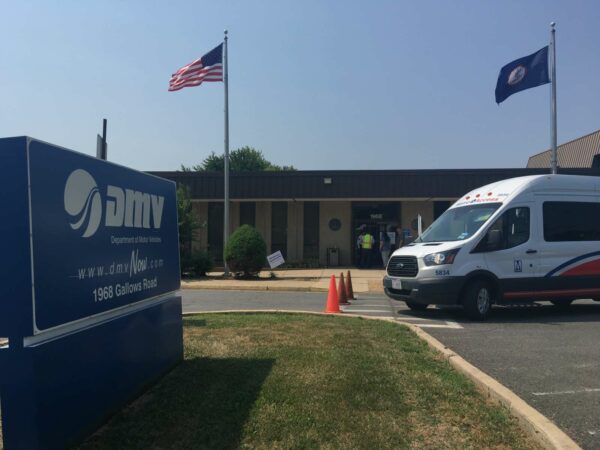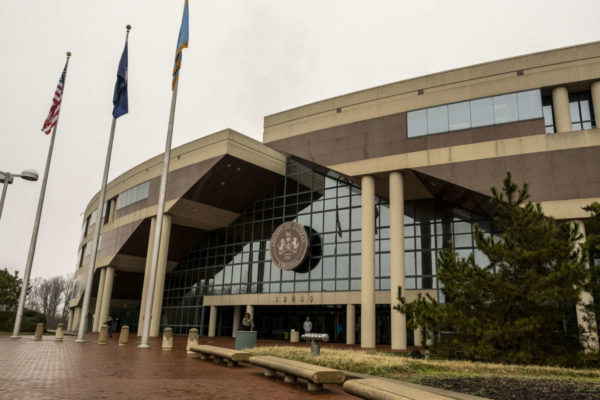Fairfax County officials support the recent reinstatement of the federal eviction mortarium and plan to continue providing rental assistance to those in need.
Earlier this week, the Centers for Disease Control and Prevention — at the behest of President Biden — renewed the ban on evictions through Oct. 3 in areas that have “substantial” or “high” community transmission of the novel coronavirus.
Fairfax County currently has “substantial” transmission, according to the CDC’s COVID data tracker.
County officials have expressed their support for the eviction mortarium, despite some debate over its legality.
“We are glad that the eviction moratorium has been extended, which will continue to provide peace of mind for families across the country,” Fairfax County Board of Supervisors Jeff McKay wrote in a statement.
Early this year, the county received $34 million for emergency rental assistance from a COVID-19 relief package passed by Congress late last year.
This allowed the county to launch a new Emergency Rental Assistance (ERA) program in early June aimed at helping not only residents, but landlords as well. Since the program launched, McKay says the county has distributed more than $8 million to 997 households through the ERA.
“In Fairfax County, we’re not dragging our feet,” McKay said. “We know our residents need assistance now, and we’re continuing to build upon our existing human services programs to meet the vastly increased need within our community.”
Help is still needed, though. Even with the federal eviction mortarium in place for most of the last 18 months, 668 writs of eviction and 1,562 unlawful detainers have been issued to county residents since July 2020, according to an Eviction Data Dashboard created by county staff.
Overall, the data shows that the threat of eviction is higher in areas hit harder by COVID-19.
According to the dashboard, the zip codes with the highest number of writs of eviction are 22102, which covers west McLean and parts of Tysons, and 22306 in Alexandria, covering the Groveton neighborhood and parts of the Lee District.
Late last year, Fairfax County created an eviction prevention task force to coordinate a countywide approach to helping keep people in their homes.
Fairfax County Neighborhood and Community Services Deputy Director Sarah Allen said in a statement that outreach to the county’s most vulnerable communities is ongoing:
Outreach efforts are underway, particularly to support our most vulnerable communities. Fairfax County agencies partner with numerous providers and are available at community events including vaccine equity clinics, health fairs and back-to-school events to ensure that residents are informed of the assistance and services available to them. We are also partnering with non-profit organizations, houses of worship and other faith-based organizations to reach communities in need.
Allen also notes that tenant and landlord checklists and a guide to the eligibility requirements for rent assistance are available in multiple languages, including Arabic, Amharic, Chinese, Farsi, Korean, Spanish, Urdu, and Vietnamese.
There’s another potentially complicating factor.
The eviction moratorium initially expired on July 31 and was extended on August 3. The CDC order says any eviction completed between August 1 and August 3 is not subjected to the order since it does not operate retroactively, meaning evictions completed during Aug. 1-3 are potentially valid.
However, Allen says the county does not know of any completed evictions during that three-day period.
“We are not aware of any evictions during that gap in time as there is still a court process required to evict,” writes Allen. “County staff is working closely with non-profit legal assistance organizations such as Legal Services of Northern Virginia for support and guidance around the eviction process.”
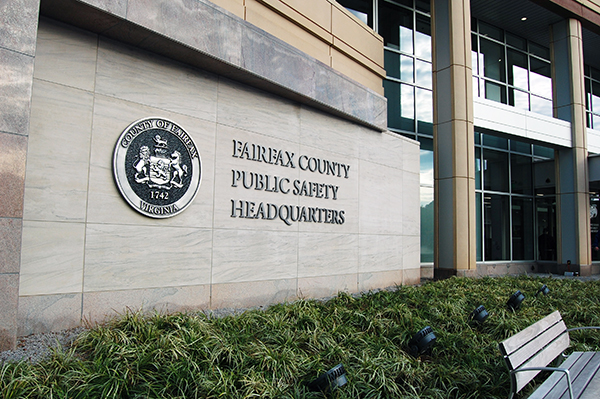
The Fairfax County Police Civilian Review Panel, a citizen-led board intended to help with police accountability, is getting an executive director.
The Fairfax County Board of Supervisors approved the change on July 27 at the urging of the review panel, which is facing increasing caseloads and seeking to gain investigatory powers.
“We’re thrilled that this new position will help us maintain our independence,” Civilian Review Panel Chair Jimmy Bierman said, thanking Board of Supervisors Chairman Jeff McKay and Lee District Supervisor Rodney Lusk, who chairs the board’s public safety committee.
Established in December 2016, the civilian review panel reviews Fairfax County Police Department investigations into civilian complaints with allegations that a police officer abused their authority or engaged in misconduct.
While the panel can make recommendations regarding law enforcement policies and practices, it was not granted the authority to conduct its own investigations.
The review panel, which consists of nine volunteers, documented in February its need for an executive director in an annual report and a four-year review, a document that Bierman spent three months of 40-hour weeks to develop.
The executive director will help the panel document and summarize investigations. Currently, the panel reviews police investigations in person and writes lengthy, time-consuming reports, which means its efforts are heavily dependent on its chair’s schedule.
Bierman, an attorney, likens the change to a congressional committee relying on staff to help draft materials or a federal judge using legal staff to write bench memos.
“It adds to the professionalism of the panel,” he said. “We want to be fiercely independent.”
Since its creation, the review panel has also relied on staff in the office of the independent police auditor, which will now send one position to the panel for the executive director.
Bierman says the staffing switch will help the panel maintain a good working relationship with police by ensuring the independent police auditor’s resources are not overtaxed.
The change to the panel comes after the Virginia General Assembly adopted a law last year that officially permitted localities to create police oversight boards with the power to investigate incidents, make binding disciplinary determinations, and more.
Bierman says the law shows the Commonwealth is serious about supporting independent oversight bodies for police.
The new executive director won’t have independent investigatory powers, but the position could lay the groundwork for the Board of Supervisors to update the panel’s bylaws to give it more authority, as allowed by the new state law, according to Bierman.
The person hired for the new position will be paid $100,000 to $150,000 per year and report directly to the board of supervisors. Springfield District Supervisor Pat Herrity was the only supervisor to oppose the measure.
“I voted against this motion because I didn’t support the original motion to form the Civilian Review Panel as we had an Independent Police Auditor, which is where most significant reviews and recommendations for reforms have come from,” Herrity said in a statement.
On Sept. 28, the board of supervisors’ public safety committee is slated to hear a presentation about the review panel along with recommendations on further reforms in line with the panel’s four-year review. Read More

The Fairfax County Economic Development Authority gave nearly $29,000 to 10 social media influencers over the past year to highlight its jobs portal and virtual career fairs.
The campaign primarily involved Instagram users posting about events with hashtags and links to drive traffic. Economic development officials said the effort was intended to develop its brand as well as the region’s job market and engage target audiences, specifically with millennials in mind.
“We felt like we needed to do some experimentation,” FCEDA President and CEO Victor Hoskins said.
The campaign drew 536 clicks to the authority’s Work in Northern Virginia jobs board and generated 276 views in online registration page traffic for technology and entry-level career fairs.
While Instagram advertising can average around $1.25 per click, the FCEDA said influencer marketing helps reach a highly targeted audience through sources that users trust. The campaign required the influencers to note that their social media posts were sponsored content.
The social media influencer contracts cost a total of $28,800 with individual agreements ranging from $800 to $7,000 and mainly required users to make Instagram posts and stories, according to agreements obtained by Tysons Reporter. One agreement included an Instagram video, and some included blog post requirements.
The authority says third-party consultant New York City-based Development Counsellors International and each influencer negotiated rates.
“[What we’re] really ultimately trying to do is build awareness of northern Virginia as this location that has thousands and thousands of jobs, and it’s a great place to live,” said Alan Fogg, the authority’s vice president of communications.
Economic development officials say the campaign delivered $205,000 in earned media value, reached more than 332,000 Instagram users, and generated nearly 25,000 likes, comments, and shares.
The FCEDA is not unique in using social media personalities to reach potential audiences. Other governmental bodies have turned to social media influencers for tourism marketing as well as running COVID-19 messaging.
Fairfax County funds the economic development authority with around $9 million each year currently, and social media advertising is just one way economic development leaders are trying to market the region to help improve the jobs pipeline.
“The message we deliver to all the recruiters and chief human resources officers from all the companies here in Fairfax County is: You sell your organization, your company, and why [to] come work there, and we’re going to help complement you with selling the region,” Mike Batt, the director of the authority’s talent initiative program, said.
The FCEDA used Development Counsellors International to identify and vet the influencers, set goals for the number of posts, and ensure posting requirements were met, Fogg said in a statement. FCEDA staff selected the influencers presented to them.
Batt said Development Counsellors International received a competitively awarded contract from the EDA. The consultant also developed the jobs hub, which the authority recently lauded.
The Fairfax County Economic Development Authority spearheaded the jobs posting site, but it’s connected to nine other economic development groups and localities in Northern Virginia.
“Economic development is not the business it was five years ago,” Hoskins said. “It really takes a lot of innovation.”
Photo via Solen Feyissa/Unsplash

(Updated at 4:10 p.m.) Virginia recommends that even vaccinated individuals wear masks indoors in certain circumstances, but with different locations experiencing different levels of COVID-19 transmission, the state has stopped short of issuing a mandate.
While some states revised their mask rules shortly after the Centers for Disease Control and Prevention’s announcement on Tuesday (July 27), Virginia had not indicated how it will approach mask-wearing amid rising COVID-19 case levels, with officials saying only that they were reviewing the new guidance.
Gov. Ralph Northam issued the first official statement on the issue via social media on Thursday (July 29), writing that “all Virginians should consider wearing a mask in public indoor settings where there is increased risk of COVD-19 transmission, as the new CDC guidance recommends.”
“This is not a requirement, but a recommendation,” he said.
All Virginians should consider wearing a mask in public indoor settings where there is increased risk of #COVID19 transmission, as the new @CDCgov guidance recommends.
This is not a requirement, but a recommendation.
— Governor Ralph Northam (@GovernorVA) July 29, 2021
These situations include masking indoors at K-12 schools and in areas of the Commonwealth that have “substantial” community transmission of the virus.
Northam noted in further tweets that there has been a dramatic rise in COVID cases in Virginia over the last month due to the delta variant and that “over 98%” of hospitalizations and deaths are residents who are unvaccinated.
When asked why the state is recommending but not requiring indoor mask-wearing, a Virginia Department of Health spokesperson said the department “doesn’t have anything to add at this moment” beyond Northam’s statement.
When explaining the decision to revise its guidelines, the CDC cited new scientific evidence showing that vaccinated people infected with the delta variant could potentially spread the virus to others. While the available vaccines effectively protect against severe illness and hospitalizations, the findings concerned officials enough to prompt a reversal of sorts after mask requirements were eased in May.
“This new science is worrisome and unfortunately warrants an update to our recommendations,” CDC director Rochelle Walensky said.
With case numbers climbing locally, as they have elsewhere around the country, Fairfax County has moved to put new rules in place in the hopes of slowing the virus’ spread without jeopardizing plans to reopen workplaces and schools.
Fairfax County Public Schools announced yesterday (Wednesday) that it will require universal masking in school buildings regardless of an individual’s vaccination status, and the Board of Supervisors approved a motion on Tuesday (July 27) to evaluate whether to implement a vaccine mandate for 12,000 county employees.
Board of Supervisors Chairman Jeff McKay said in a statement that he supports a shift back to wearing masks indoors for places with high COVID-19 transmission and around people who are unable to get vaccinated:
With the delta variant surging in unvaccinated communities, I support masking in areas with more people vulnerable to contracting COVID-19 who aren’t able to be vaccinated (such as schools) and areas with a high risk of transmission. In Fairfax County we will continue to follow state guidelines on masking and sharing the effectiveness of masking to slow the spread of COVID-19.
Currently, 76% of Fairfax Health District residents over the age of 18 have received at least one dose of the vaccine and 69.4% are fully vaccinated, according to the Fairfax County Health Department’s vaccine dashboard.
While that’s above Virginia and national rates, those numbers have barely budged over the last several weeks as the county looks for ways to get more residents immunized.
Health experts and public officials continue to reiterate that vaccines are the best tools in the fight against the pandemic.
“The vaccine is the strongest tool we have to fight this pandemic,” McKay wrote. “For the sake of our economic recovery, sending students back to school, and returning to normal, we need even more people to get vaccinated. If you aren’t vaccinated, go to vaccine.gov to get scheduled, there are appointments available near you!”
In terms of transmission rates, Fairfax County is currently doing better than many other Virginia counties.
While the CDC’s COVID tracker shows that a large swath of the Commonwealth has “substantial community transmission,” Fairfax County currently has “moderate” transmission like Arlington County. A number of nearby localities like the City of Alexandria, Stafford, and Spotsylvania counties have “substantial” or even “high” transmission.
D.C., which has substantial spread, announced today that it will require everyone 2 and older to wear masks indoors regardless of their vaccination status starting Saturday (July 31).
Photo via Mika Baumeister/Unsplash
Fairfax County residents in need of Department of Motor Vehicle services are finding they need to book an appointment months in advance.
In response to those reported concerns, the county Board of Supervisors agreed on Tuesday (July 27) to contact the state to see how it will address wait times.
Springfield District Supervisor Pat Herrity said residents have reported that they’re traveling as far as three hours away to South Hill to get DMV services.
“Given that DMV services are essential, Fairfax County residents should not have to wait over a month or be forced to go to other parts of Virginia for an appointment,” Herrity said.
The DMV introduced the appointment system when it reopened sites in May 2020 after a pandemic-induced shutdown. During that time frame, it has also added more online capabilities to help reduce foot traffic.
“We are not yet where we need to be, but we are proud of the progress we’ve made from implementing a brand new appointment system in the height of a global pandemic a little more than a year ago,” DMV spokeswoman Jessica Cowardin said in a statement.
On a recent visit to a DMV center in Tysons, Great Falls resident Barbara Martin found the experience quite different compared to when walk-ins were allowed, which would result in dozens of people crowding into the building.
Martin booked her appointment about a month and a half ago and said she was relieved to be there, expressing appreciation for the staff’s attention to details.
The DMV reopened its Tysons location (1968 Gallows Road) in June 2020 and its Sterling location (100 Free Court) in August 2020. It also opened a new customer service center in Sterling (22360 S. Sterling Blvd., Unit D112) this past January.
“By installing an appointment system we have become more efficient, transactions are conducted quickly and customer wait times have been minimized,” Cowardin wrote. “And appointment availability will continue to increase as we are able to hire and train employees and emerge more fully from the pandemic, which is still ongoing.”
Chai Chala of McLean says he lucked out and only had to wait 10 days for an appointment at the Tysons DMV center, which he visited to register a new car.
“The experience was really nice,” he said, adding his only complaint was the sun’s heat.
Since reopening, the DMV added several services to its website that can save customers a trip to a physical building.
In September, it introduced two-year renewals for driver’s licenses and ID cars by online and mail, and in November, it began online renewals for commercial driver’s licenses. As of February, it also now offers drivers the ability to replace licenses and permits that were lost or stolen.
Customers can also get appointments with DMV Select partner officers, which conduct vehicle-related transactions, as well as DMV Connect, a team of mobile workers whose regular stops include the Fairfax County Government Center.
Cowardin said the DMV intends to keep the appointment system for the foreseeable future, noting that the vast majority of transactions conducted since May 2020 have been conducted remotely.
“During the pandemic, customers shifted the way they conduct business with DMV in that more customers are now conducting DMV business by service delivery methods other than the [customer service centers], such as mail, internet, online dealers or DMV Select partners,” she noted.
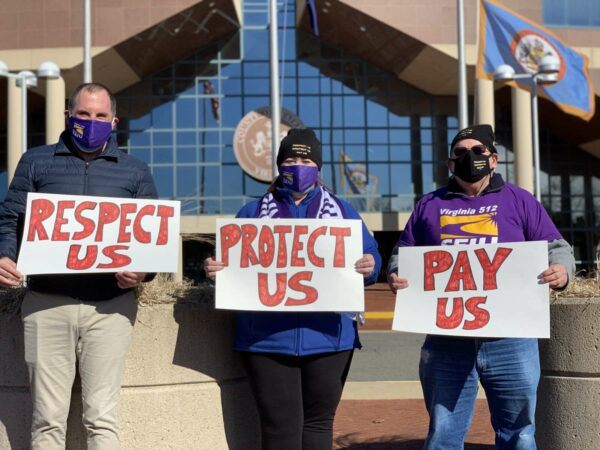
One in seven Fairfax County employees can’t afford an adequate standard of living in the county where they work, a report released last week by a Richmond-based think tank found.
Published on July 21 by The Commonwealth Institute for Fiscal Analysis (TCI), which advocates for public policy that advances racial and economic justice in Virginia, the “Rebuilding Stronger for Fairfax County” report comes as county leaders continue discussions on a collective bargaining ordinance for public employees.
Comparing government workers’ salaries to the cost of living and what their private-sector counterparts earn, the study authors say their findings support the need for collective bargaining, where employee unions can negotiate compensation, working conditions, and other terms of their employment.
“The fair and clear standards provided by unionization particularly help Black and Latinx workers,” TCI Research Director Laura Goren said in a statement. “Women, who make up the majority of local government workers, would also particularly benefit from collective bargaining.”
Using the Economic Policy Institute’s family budget calculator, TCI determined that a single person would need an annual income of at least $57,052 to afford a “modest yet adequate” standard of living in Fairfax County, including housing, transportation, health care, taxes, and other necessary expenses.
A family with one parent and two children would need to earn at least $106,395 a year.
According to the report, however, the bottom 20% of Fairfax County’s workforce in terms of salary, including part-time employees, make between $40,000 and $60,000 annually, leaving them unable to support themselves.
Only the top 20% of workers, who earn under $120,000, can cover the cost of living for a family of three.
The findings came after TCI released a similar report on Loudoun County, where one in five county workers can’t afford an adequate standard of living. The Board of Supervisors there voted on July 20 to proceed with crafting a collective bargaining ordinance.
According to TCI, public employees in Virginia are typically paid 29.9% less than what they would get in the private sector, a gap that widens to 33.4% in Northern Virginia. When pension and health care benefits are considered, the difference in compensation narrows slightly to 28% for the Commonwealth as a whole.
As the cost of living has risen, so have turnovers and vacancies, which went from 3.4% of all Fairfax County government positions in fiscal year 2007 to 8% of all positions in FY 2016, according to a county “lines of business” review of employee compensation.
While it won’t close the gap between public and private wages, the TCI report says giving public workers the ability to collectively bargain would help address inequities, boosting pay by 5 to 8%.
“This report provides rigorous research that backs up what essential workers have always known to be true,” Tammie Wondong, president of SEIU Virginia 512’s Fairfax County chapter, said. “Having a seat at the table through collective bargaining allows us to advance equity and build an even stronger community where every working family can thrive.”
SEIU’s Fairfax County Government Employees Union Chapter, which represents more than 2,000 workers, has been advocating for a collective bargaining ordinance since the Virginia General Assembly passed legislation giving localities that authority in 2020, though the law didn’t take effect until May 1 of this year.
County staff released an initial draft ordinance on May 25, and the Fairfax County Board of Supervisors has been debating the scope and details of the proposal for the past two months. The most recent draft came before the board’s personnel committee on July 20.
Board of Supervisors Chairman Jeff McKay echoed Wondong’s sentiments, saying the TCI report confirms that collective bargaining will reduce inequity, support quality jobs, and improve county services.
“I’m proud of the steps we’ve taken to ensure a great county workforce, including a $15 living wage, paid family leave, initiatives to increase workforce housing, and a strong retirement system,” McKay said. “Collective bargaining will further help us attract and retain great employees to ensure we continue delivering quality public services for our community.”
Fairfax County Human Resources Director Cathy Spage said at last week’s committee meeting that when the board meets on Sept. 14, county staff will ask it to authorize a public hearing on the proposed collective bargaining ordinance on Oct. 5.
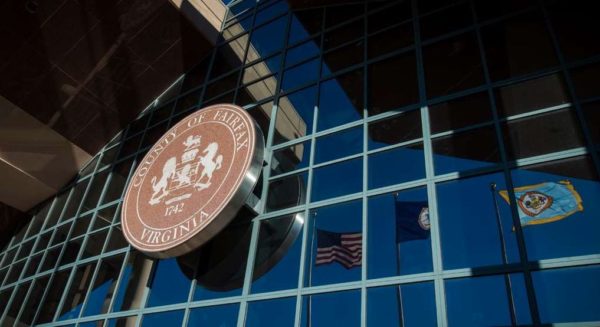
Fairfax County will use an estimated $10 million in COVID-19 relief money for another major grant program aimed at helping community partners keep their doors open.
The Board of Supervisors approved the Active and Thriving Community Grants Program at its meeting yesterday (Tuesday), where grants will range from $2,000 to $18,000 depending on the size of the business or nonprofit.
While businesses have pushed to reopen, many continue to struggle, and COVID-19 concerns persist. The grants target child care providers, community-based safety net providers, youth recreational or educational programs, youth athletic groups, and pools.
“As someone who visits a child care center everyday, they’re still operating under COVID restrictions that other businesses aren’t,” Braddock District Supervisor James Walkinshaw said during the board meeting. “So, they’re still dealing with that in terms of capacity and PPE [personal protective equipment] and masking.”
County staff reported that many community-based organizations “continue to struggle economically” due to COVID-19 and most have had to cancel or significantly alter major fundraising events.
“For many, giving levels have not returned to prior levels,” county staff wrote in the meeting agenda. “For many donors, giving patterns have changed. Even where giving has increased, it has not made up for lost revenue or increased expenses.”
Fairfax County Neighborhood and Community Services Deputy Director Sarah Allen told the board that the application period for the new grant program will launch by the end of August.
To be eligible, recipients will be required to show that they had a 15% decline in gross revenue in 2020 compared to 2019 or a 15% increase in expenditures directly tied to costs due to the pandemic.
The new grants are projected to allocate:
- $4.3 million for child care providers
- $1.9 million for community-based safety net providers
- $1.8 million for youth recreational or educational programs
- $1.5 million for youth athletic organizations
- $500,000 for pools
“A lot of these organizations survived through the pandemic because the…volunteer board members or the parents or community members involved dipped into their own pockets to keep things going so they didn’t have to go out of business,” Walkinshaw said.
The money comes as the county is finalizing awards for its PIVOT program, which will provide over $24.4 million in grants from the American Rescue Plan Act to businesses in the retail, food, and lodging sectors and other organizations financially affected by the pandemic.
When the county created the PIVOT program on June 8, staff were also looking for ways to provide additional assistance. A county survey of child care programs conducted in March found that over half of respondents did not know how long they would be able to stay open without financial support.
“The potential closure of child care programs could come at a time when more parents are returning to work, impacting working parents and their children, employers, and the child care workforce and their families,” the staff report said.
In awarding the grants, the county expects to use a priority measure related to vulnerable populations to pick recipients in the child care and pool categories. The remaining awards would be determined by a lottery system.
It wasn’t immediately clear how exactly the priority measure would work, but the county said staff will look at the social and economic conditions that made populations more vulnerable to COVID-19 as well as recent economic, health, and other data relevant to the pandemic’s impact.
Similar to the PIVOT grants, the county will use a third-party vendor — the Latino Economic Development Corp. — for the online grant administration portal and awards. Advertising and outreach in multiple languages will begin before the August launch.
“This grant program will prioritize disproportionately impacted populations and communities wherever possible,” county staff said.
Photo via Fairfax County/Facebook
(Updated at 11:30 a.m.) Fairfax County could require all of its employees to get vaccinated against COVID-19 when they return to offices this fall.
During their meeting today (Tuesday), the Fairfax County Board of Supervisors unanimously approved a motion brought by Chairman Jeff McKay directing County Executive Bryan Hill to evaluate whether to implement a vaccine mandate for the county’s 12,000 government employees, who range from library staff to police and solid waste workers.
While the county has reported relatively high vaccination rates, with almost 80% of adults having gotten at least one dose, some people who are eligible for the vaccine are choosing not to get it because of “false information,” according to McKay.
“Getting vaccinated is an act of public charity,” McKay said. “It’s not just about protecting you, but protecting everyone that you work with, every county resident that seeks our services, and everyone that works in our community.”
McKay confirmed that Hill is currently developing a plan for county government employees to return to offices in September.
The board directed Hill to consider providing some exemptions from the vaccine mandate for “religious and medical purposes” as well as requiring face masks and weekly COVID-19 testing for employees who do not qualify for an exemption and continue to refuse to get vaccinated.
In introducing the motion, McKay cited the growing prevalence of the delta variant, which now makes up more than 80% of all new cases in the U.S. and an estimated 69.4% of cases in the mid-Atlantic region, including Virginia, according to the Centers for Disease Control and Prevention.
Like elsewhere in the country, Fairfax County has seen a rise in cases throughout July.
McKay noted that the need to bring COVID-19 case levels back down is especially urgent as Fairfax County Public Schools hopes to reintroduce five days of in-person learning when the new school year starts in August.
“What is happening right now with the delta variant in our community is scary for so many people, and I know it’s scary for our public school system,” McKay said. “Keep in mind that there are thousands of kids in elementary school that don’t have the luxury of getting vaccinated, and we need to do it for them. We need to make sure that our schools can reopen fully and safely, and we all need to get vaccinated to ensure that that happens.”
The board’s move comes as the CDC is expected to announce this afternoon a reversal of its policy allowing unvaccinated people to go maskless indoors, as reported by The Washington Post and other national outlets.
David Taube contributed to this report.
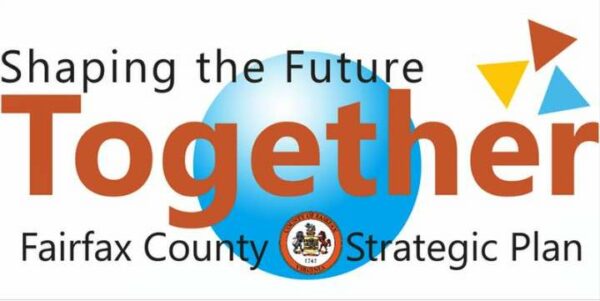
The Countywide Strategic Plan meant to establish a community-driven vision for Fairfax County for the next 10 to 20 years is edging closer to an expected adoption by the Fairfax County Board of Supervisors.
The county hosted a community update and feedback session on Wednesday (July 21) to gather feedback about potential indicators for success among nine priority areas listed in the proposed 56-page strategic plan.
It was part of the fourth phase of engagement initiated by the county. Two rounds were held in 2019 before the process was paused in 2020 to evaluate COVID-19 impacts. Two additional phases were added for 2021, with the third survey phase wrapping up in April.
The Board of Supervisors is expected to take action in October, according to countywide strategic plan coordinator Aimee Brobst, who led the meeting.
While there are no outreach plans to solicit direct public comments on the final text before it is presented to the board, Brobst said community engagement will continue after the plan is adopted. At that point, the county’s approach will “likely shift” to a more targeted focus on each priority area in addition to seeking feedback on the plan as a whole.
“We definitely want to use the feedback that we’re collecting here for the purpose of informing the strategic plan,” Brobst said. “But as we look forward, beyond even when the plan is adopted by the Board of Supervisors, we want to make sure that this isn’t something that stops once the plan is adopted, and we are being very thoughtful and very intentional about hearing from as many people as possible as we move forward.”
The nine priority areas of the plan include:
- Cultural and recreational opportunities
- Economic opportunity
- Effective and efficient government
- Empowerment and support for residents facing vulnerability
- Health and environment
- Housing and neighborhood livability
- Lifelong education and learning
- Mobility and transportation
- Safety and security
A poll to gauge attendees’ preferred focus areas within those categories found particular interest in access to cultural and recreational opportunities; economic stability and mobility for all people; financial sustainability and trustworthiness; and access and utilization of services.
Other top indicators were air, water and land quality; housing affordability and quality; career-based training and early childhood education; accessibility, affordability and equity for mobility and transportation; and reliability and security of critical infrastructure.
County staff noted that the plan is meant to be flexible with the ability to adapt over time, serving as a template to help the board determine its priorities and understand what community members think is important.
Acknowledging the rather sparse attendance at the meeting, Brobst said that the shift to virtual meetings over the past year due to the COVID-19 pandemic has pushed the county to rethink and expand the tools it uses to engage the public.
“In addition to everything we’re doing that we think makes sense — using every channel that we have available to us as the county — we are very open to adapting,” Brobst said. “…One of the things we definitely wanted to do as part of this process is not necessarily do things just the same way as they’ve always been done in terms of doing only in-person meetings or doing just surveys or long-form surveys.”
A form for general questions or feedback for the plan is available at the bottom of the strategic plan page on the county’s website.

Thanks to federal relief funding, Fairfax County is getting an infusion of emergency housing voucher money to help people who are at risk of homelessness or fleeing from domestic violence and others in need.
The American Rescue Plan Act signed into law in March is providing $10 billion to address homelessness, including 70,000 vouchers to local housing authorities, including Fairfax County.
The county will partner with community groups to provide the housing assistance, which could last 10 years — the length of the program — for each recipient.
“We are very grateful to receive these Emergency Housing Vouchers to serve many of our most vulnerable residents and neighbors and help them achieve safe and stable housing,” Fairfax County Redevelopment and Housing Authority Chair C. Melissa McKenna, who serves as the Dranesville District commissioner, said in a statement.
The Fairfax County Redevelopment and Housing Authority approved a county framework last Thursday (July 15) to receive the money, which involves 169 vouchers that will be made available in coming weeks.
Recipients will need to be referred to the program by county case managers or other service points, such as homeless services, Coordinated Services Planning (703-222-0880), or the Domestic and Sexual Violence 24-Hour Hotline (703-360-7273).
Money will go to landlords, and recipients will be required to pay 30% of their income toward rent and utilities.
The emergency housing vouchers can cover a variety of costs, including security deposits, moving expenses, and essential household items such as bedding and tableware.
Even outside the vouchers, ARPA has dedicated billions of dollars to addressing housing issues, as people have struggled to pay rent amid statewide shutdowns last year and uncertain employment due to the COVID-19 pandemic.
The need to provide housing assistance is expected to become especially urgent in the coming months after the Centers for Disease Control and Prevention’s eviction moratorium expires on July 31.
“The [assistance is] designed to prevent and respond to [the] coronavirus by facilitation the leasing of the [emergency housing vouchers], which will provide vulnerable individuals and families a much safer housing environment to minimize the risk of coronavirus exposure or spread,” Dominique Blom, a general deputy assistant secretary with the Housing and Urban Development Department, said in a May memo describing the funding.
Vaccinations have helped bring the virus under control, but cases have been rising in Virginia and the U.S. amid the spread of the highly contagious delta variant, which is now the source of 83% of all new COVID-19 cases, according to CDC estimates.
“Individuals and families who are homeless or at-risk of homelessness are often living in conditions that significantly increase the risk of exposure to coronavirus in addition to other health risks,” Blom said in the memo.
Eligibility for the vouchers is limited to individuals and families who are experiencing homelessness, at risk of homelessness, or were recently homeless and “for whom providing rental assistance will prevent the family’s homelessness or having high risk of housing instability.”
People fleeing — or attempting to flee — domestic violence, dating violence, sexual assault, stalking, or human trafficking are also eligible for the vouchers.
“These vouchers — in addition to the existing programs and services offered through a robust partnership — offer yet another valuable resource to help position individuals and families on a reliable foundation from which they can achieve their fullest potential,” McKenna said in her statement.
During the first year of the pandemic, homelessness decreased throughout the D.C. region except in Fairfax County, which saw a 17% increase from 1,041 people in 2020 to 1,222 in 2021, and Prince George’s County, which had a 19% increase, according to a Metropolitan Washington Council of Governments report.
Fairfax County has attributed the increase to expanded services supported by COVID-19 relief funding.



